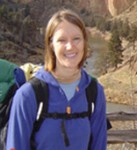
Program: Interdisciplinary PhD in Urban Design and Planning
Thesis Title: The residential urban forest: linking structure, function and management
In coupled human-natural systems, vegetation simultaneously provides ecological function (i.e., carbon storage, rainwater interception) and human services (microclimate regulation, reduction of stormwater runoff). However plant communities are significantly altered by urbanization as development transforms and fragments natural cover and land management alters community composition. Forest structure, such as plant community composition and tree abundance, influences ecosystem functions and the provision of ecosystem services. We have learned a great deal about vegetation structure and function in urbanizing environments. Yet most studies have not fully integrated human-environment interactions or fully represent the heterogeneity of the urban landscape. I am interested in applying urban gradient analysis and conceptual frameworks from coupled human-natural system theory to better understand urban ecological dynamics. Three overarching research questions guide my work:
1) What are the drivers which maintain the urban forest and how do they vary across a gradient of urbanization?
2) What are the resultant spatial distributions of urban forest characteristics (diversity, abundance, etc) and ecological outcomes, such as ecosystem service provision, across the urban landscape?
3) Finally, what are the interactions or feedback loops between urban forest patterns, ecosystem services and land managers, such as homeowners?
Other research and activities
This year (2012) I have been working with the Green Cities Research Alliance and the US Forest Service to assess and describe the structure of and services provided by the urban forest in three study regions within the Seattle metropolitan region: the City of Seattle, King County Parklands and the Green Duwamish Watershed.
In 2011, I led the integrated predictive model component of the Scenarios for Snohomish Basin 2060 project. The blueprint for the integrated model was created from discussions with regional modelers via personal interviews and a model workshop.
I teach the URBDP 598D: Introduction to Geographical Information Systems class in the fall (2010, 2011, 2012)
Publications and presentations
Ciecko, L., K. Tenneson, J Dilley and K Wolf. “Seattle’s Forest Ecosystem Values. Analysis of the structure, function and economic benefits” 2012. Green Cities Research Alliance.
Tenneson-Puruncajas, K. “Understanding urban forest structure of residential landscapes in the Seattle metropolitan urban(izing) region” April 2011. U.S. International Association for Landscape Ecology (US-IALE) symposium, Portland, OR.
Tenneson-Puruncajas, K. “Vegetation patterns in an urbanizing metropolitan area: socio-economic drivers and effects on carbon storage and water flows” April 2010. Emerging Issues Along Urban-rural Interfaces 3, Atlanta, GA.
[project_list page=”1139″]